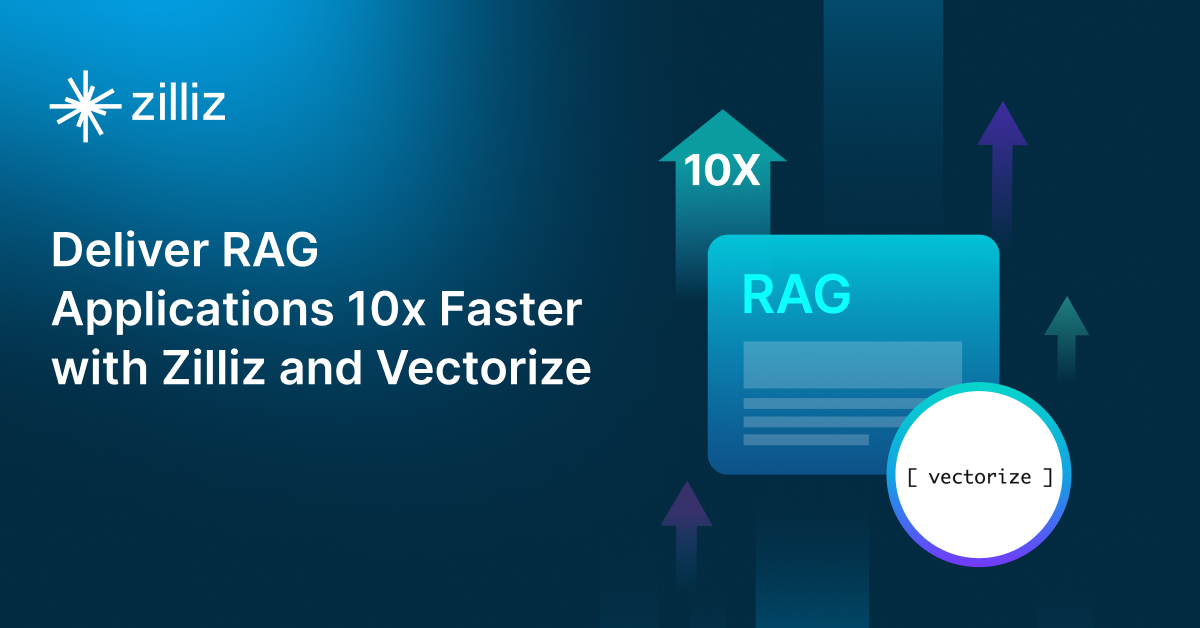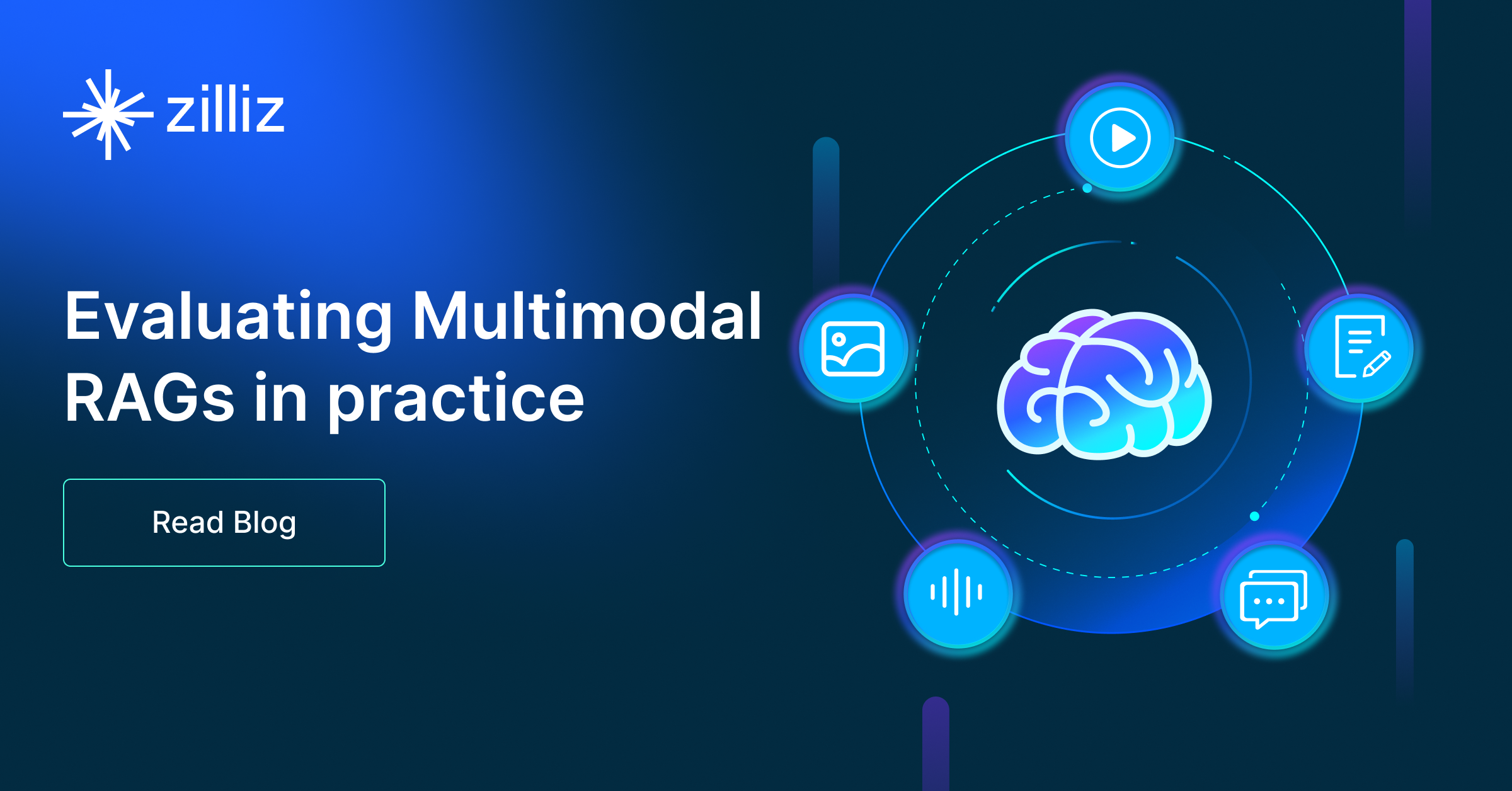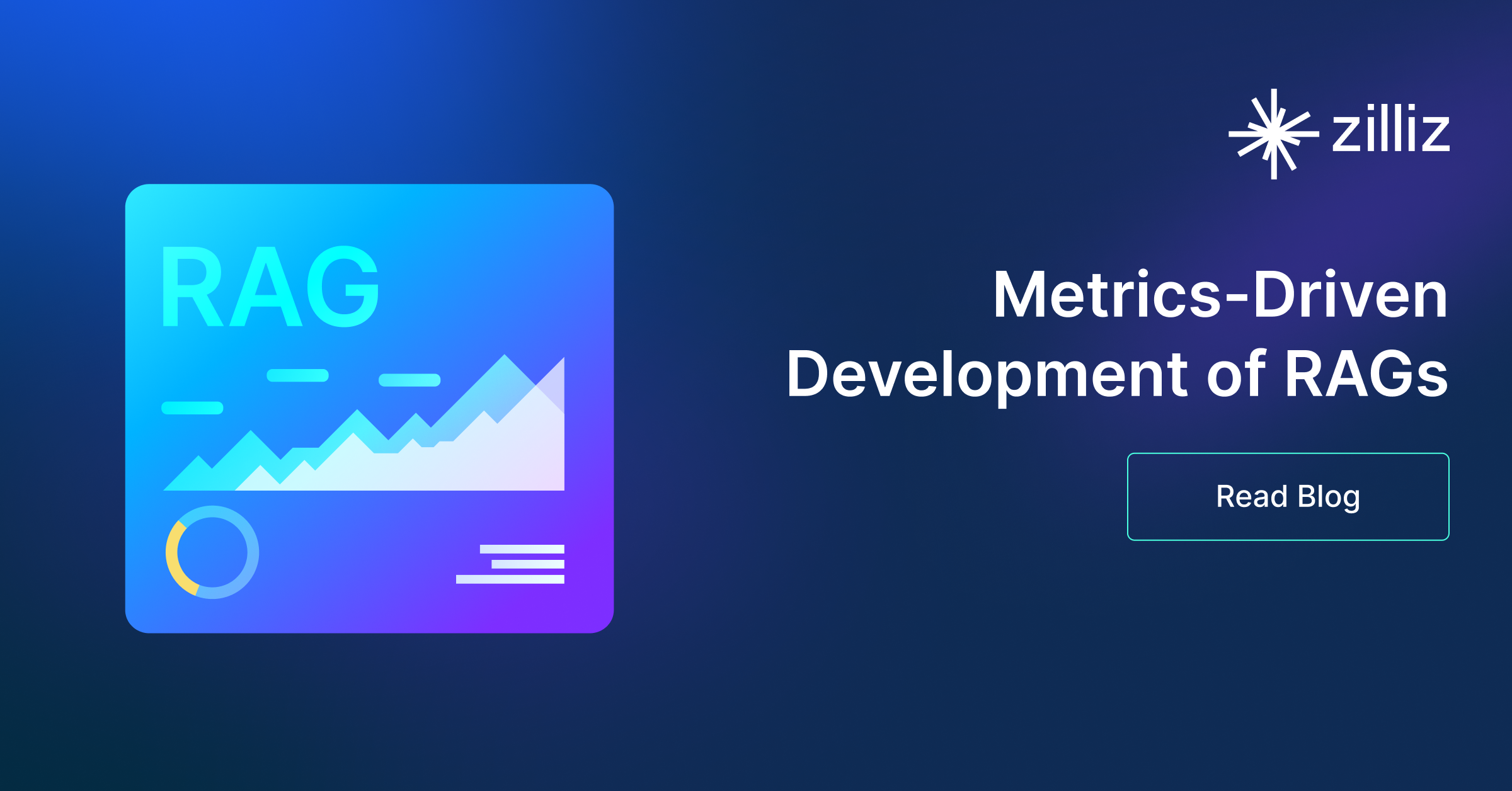Build RAG Chatbot with Llamaindex, Zilliz Cloud, Gemini 2.0 Pro, and Ollama mxbai-embed-large
Introduction to RAG
Retrieval-Augmented Generation (RAG) is a game-changer for GenAI applications, especially in conversational AI. It combines the power of pre-trained large language models (LLMs) like OpenAI’s GPT with external knowledge sources stored in vector databases such as Milvus and Zilliz Cloud, allowing for more accurate, contextually relevant, and up-to-date response generation. A RAG pipeline usually consists of four basic components: a vector database, an embedding model, an LLM, and a framework.
Key Components We'll Use for This RAG Chatbot
This tutorial shows you how to build a simple RAG chatbot in Python using the following components:
- Llamaindex: a data framework that connects large language models (LLMs) with various data sources, enabling efficient retrieval-augmented generation (RAG). It helps structure, index, and query private or external data, optimizing LLM applications for search, chatbots, and analytics.
- Zilliz Cloud: a fully managed vector database-as-a-service platform built on top of the open-source Milvus, designed to handle high-performance vector data processing at scale. It enables organizations to efficiently store, search, and analyze large volumes of unstructured data, such as text, images, or audio, by leveraging advanced vector search technology. It offers a free tier supporting up to 1 million vectors.
- Gemini 2.0 Pro: A powerful, general-purpose AI model that excels in complex reasoning, text generation, and multi-turn conversations. It is well-suited for knowledge-intensive applications, research assistance, and enterprise automation, offering a strong balance between performance, depth of understanding, and efficiency.
- Ollama mxbai-embed-large: A high-performance embedding model optimized for converting text into dense vector representations, excelling in semantic similarity tasks. It features multilingual support, efficient processing of long documents, and low-latency inference, making it ideal for semantic search, document clustering, content recommendation, and retrieval-augmented generation (RAG) pipelines.
By the end of this tutorial, you’ll have a functional chatbot capable of answering questions based on a custom knowledge base.
Note: Since we may use proprietary models in our tutorials, make sure you have the required API key beforehand.
Step 1: Install and Set Up Llamaindex
pip install llama-index
Step 2: Install and Set Up Gemini 2.0 Pro
%pip install llama-index-llms-google-genai llama-index
from llama_index.llms.google_genai import GoogleGenAI
llm = GoogleGenAI(
model="gemini-2.0-pro-exp-02-05",
# api_key="some key", # uses GOOGLE_API_KEY env var by default
)
Step 3: Install and Set Up Ollama mxbai-embed-large
%pip install llama-index-embeddings-ollama
from llama_index.embeddings.ollama import OllamaEmbedding
embed_model = OllamaEmbedding(
model_name="mxbai-embed-large",
)
Step 4: Install and Set Up Zilliz Cloud
pip install llama-index-vector-stores-milvus
from llama_index.core import VectorStoreIndex, StorageContext
from llama_index.vector_stores.milvus import MilvusVectorStore
vector_store = MilvusVectorStore(
uri=ZILLIZ_CLOUD_URI,
token=ZILLIZ_CLOUD_TOKEN,
dim=1536, # You can replace it with your embedding model's dimension.
overwrite=True,
)
Step 5: Build a RAG Chatbot
Now that you’ve set up all components, let’s start to build a simple chatbot. We’ll use the Milvus introduction doc as a private knowledge base. You can replace it with your own dataset to customize your RAG chatbot.
import requests
from llama_index.core import SimpleDirectoryReader
# load documents
url = 'https://raw.githubusercontent.com/milvus-io/milvus-docs/refs/heads/v2.5.x/site/en/about/overview.md'
example_file = 'example_file.md' # You can replace it with your own file paths.
response = requests.get(url)
with open(example_file, 'wb') as f:
f.write(response.content)
documents = SimpleDirectoryReader(
input_files=[example_file]
).load_data()
print("Document ID:", documents[0].doc_id)
storage_context = StorageContext.from_defaults(vector_store=vector_store)
index = VectorStoreIndex.from_documents(
documents, storage_context=storage_context, embed_model=embed_model
)
query_engine = index.as_query_engine(llm=llm)
res = query_engine.query("What is Milvus?") # You can replace it with your own question.
print(res)
Example output
Milvus is a high-performance, highly scalable vector database designed to operate efficiently across various environments, from personal laptops to large-scale distributed systems. It is available as both open-source software and a cloud service. Milvus excels in managing unstructured data by converting it into numerical vectors through embeddings, which facilitates fast and scalable searches and analytics. The database supports a wide range of data types and offers robust data modeling capabilities, allowing users to organize their data effectively. Additionally, Milvus provides multiple deployment options, including a lightweight version for quick prototyping and a distributed version for handling massive data scales.
Optimization Tips
As you build your RAG system, optimization is key to ensuring peak performance and efficiency. While setting up the components is an essential first step, fine-tuning each one will help you create a solution that works even better and scales seamlessly. In this section, we’ll share some practical tips for optimizing all these components, giving you the edge to build smarter, faster, and more responsive RAG applications.
LlamaIndex optimization tips
To optimize LlamaIndex for a Retrieval-Augmented Generation (RAG) setup, structure your data efficiently using hierarchical indices like tree-based or keyword-table indices for faster retrieval. Use embeddings that align with your use case to improve search relevance. Fine-tune chunk sizes to balance context length and retrieval precision. Enable caching for frequently accessed queries to enhance performance. Optimize metadata filtering to reduce unnecessary search space and improve speed. If using vector databases, ensure indexing strategies align with your query patterns. Implement async processing to handle large-scale document ingestion efficiently. Regularly monitor query performance and adjust indexing parameters as needed for optimal results.
Zilliz Cloud optimization tips
Optimizing Zilliz Cloud for a RAG system involves efficient index selection, query tuning, and resource management. Use Hierarchical Navigable Small World (HNSW) indexing for high-speed, approximate nearest neighbor search while balancing recall and efficiency. Fine-tune ef_construction and M parameters based on your dataset size and query workload to optimize search accuracy and latency. Enable dynamic scaling to handle fluctuating workloads efficiently, ensuring smooth performance under varying query loads. Implement data partitioning to improve retrieval speed by grouping related data, reducing unnecessary comparisons. Regularly update and optimize embeddings to keep results relevant, particularly when dealing with evolving datasets. Use hybrid search techniques, such as combining vector and keyword search, to improve response quality. Monitor system metrics in Zilliz Cloud’s dashboard and adjust configurations accordingly to maintain low-latency, high-throughput performance.
Gemini 2.0 Pro optimization tips
Gemini 2.0 Pro excels in complex reasoning, making it ideal for RAG applications that require deep contextual understanding. To maximize performance, refine retrieval pipelines to deliver highly relevant context while avoiding excessive token consumption. Use prompt engineering to guide the model’s reasoning efficiently. Optimize document chunking to avoid overloading the model with redundant information. Consider using hybrid search (keyword + vector search) for improved retrieval precision.
Ollama mxbai-embed-large optimization tips
Optimize Ollama mxbai-embed-large in RAG by preprocessing input text: clean, normalize, and chunk documents into 256-512 token segments for balanced context. Use batch inference to parallelize embedding generation, reducing latency. Fine-tune the model on domain-specific data if labeled pairs are available. Cache frequent or static embeddings to avoid recomputation. Ensure hardware acceleration (e.g., CUDA) is enabled. Test cosine similarity thresholds for retrieval accuracy and adjust based on downstream tasks. Regularly update the vector database with fresh data to maintain relevance.
By implementing these tips across your components, you'll be able to enhance the performance and functionality of your RAG system, ensuring it’s optimized for both speed and accuracy. Keep testing, iterating, and refining your setup to stay ahead in the ever-evolving world of AI development.
RAG Cost Calculator: A Free Tool to Calculate Your Cost in Seconds
Estimating the cost of a Retrieval-Augmented Generation (RAG) pipeline involves analyzing expenses across vector storage, compute resources, and API usage. Key cost drivers include vector database queries, embedding generation, and LLM inference.
RAG Cost Calculator is a free tool that quickly estimates the cost of building a RAG pipeline, including chunking, embedding, vector storage/search, and LLM generation. It also helps you identify cost-saving opportunities and achieve up to 10x cost reduction on vector databases with the serverless option.
 Calculate your RAG cost
Calculate your RAG cost
What Have You Learned?
Wow! You’ve just journeyed through an exciting tutorial that revealed the magic of integrating LlamaIndex, Zilliz Cloud, Gemini 2.0 Pro, and the Ollama mxbai-embed-large model to build your very own Retrieval-Augmented Generation (RAG) system! What a fantastic learning experience! You’ve discovered how to leverage a robust framework with LlamaIndex to organize and access your data seamlessly. By utilizing Zilliz Cloud’s powerful vector database, you've seen how to efficiently store and retrieve data in a way that complements the capabilities of a Large Language Model like Gemini 2.0 Pro. On top of that, you employed the Ollama embedding model to translate your data into rich embeddings that enhance understanding and retrieval tasks. Each component plays a unique role, harmonizing to create a state-of-the-art RAG pipeline that goes beyond basic data querying!
Now, let’s not forget those fantastic optimization tips you picked up along the way, along with the free RAG cost calculator that empowers you to assess your project budget smartly. Imagine the potential applications you can innovate as you combine these technologies! With the skills and insights you’ve gained, the horizon is wide open for you to explore and create. You’re now ready to dive into building, optimizing, and taking your RAG applications to the next level. So let your creativity soar—get started on shaping those amazing ideas into reality! Your journey into the world of cutting-edge AI technology is just beginning, and I can't wait to see where you take it!
Further Resources
🌟 In addition to this RAG tutorial, unleash your full potential with these incredible resources to level up your RAG skills.
- How to Build a Multimodal RAG | Documentation
- How to Enhance the Performance of Your RAG Pipeline
- Graph RAG with Milvus | Documentation
- How to Evaluate RAG Applications - Zilliz Learn
- Generative AI Resource Hub | Zilliz
We'd Love to Hear What You Think!
We’d love to hear your thoughts! 🌟 Leave your questions or comments below or join our vibrant Milvus Discord community to share your experiences, ask questions, or connect with thousands of AI enthusiasts. Your journey matters to us!
If you like this tutorial, show your support by giving our Milvus GitHub repo a star ⭐—it means the world to us and inspires us to keep creating! 💖
- Introduction to RAG
- Key Components We'll Use for This RAG Chatbot
- Step 1: Install and Set Up Llamaindex
- Step 2: Install and Set Up Gemini 2.0 Pro
- Step 3: Install and Set Up Ollama mxbai-embed-large
- Step 4: Install and Set Up Zilliz Cloud
- Step 5: Build a RAG Chatbot
- Optimization Tips
- RAG Cost Calculator: A Free Tool to Calculate Your Cost in Seconds
- What Have You Learned?
- Further Resources
- We'd Love to Hear What You Think!
Content
Vector Database at Scale
Zilliz Cloud is a fully-managed vector database built for scale, perfect for your RAG apps.
Try Zilliz Cloud for Free


